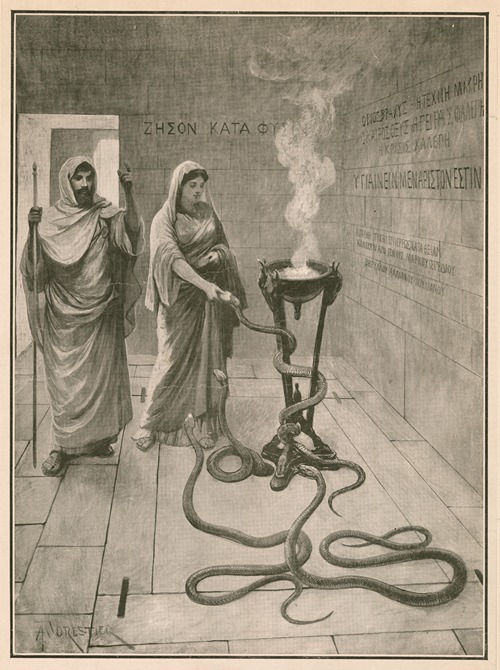

Amédée Forestier
Charles Amédée Forestier was an Anglo-French artist and illustrator who specialised in historical and prehistoric scenes, and landscapes.
Forestier was born in Paris, France, and studied art under Henri Lehmann at the École des Beaux-arts. In 1882 he began working for the Illustrated London News, producing illustrations for news items and fictional stories. He also produced illustrations for the Windsor Magazine, for the novels of several authors including Walter Besant, and for various travel books by A & C Black.
Forestier became known for his historical illustrations, especially his carefully researched drawings of archaeological finds such as prehistoric man. His drawings are notable for their attention to detail, a consequence of the need to convey a lot of visual information, with little accompanying text, in the popular illustrated magazines of the day.
In December 1911, a series of his drawings (accompanying text by Arthur Bulleid) was published in the Illustrated London News, depicting scenes of everyday life in an Iron Age village near present-day Glastonbury – "Glastonbury Lake Village". These scenes were widely reproduced and seen as influential in shaping public perceptions of prehistory at the time.
Forestier also worked for the Royal Ontario Museum and the London Museum, producing illustrations of Roman Life, and later had an illustrated book published on the subject – The Roman Soldier (A & C Black, 1928).
In 1922 his "Nebraska Man" drawings appeared in the Illustrated London News. These reconstructions, in collaboration with scientist Grafton Elliot Smith, were of a possible ape-like ancestor of present-day man, based on a fossil tooth found in Nebraska. However this drawing owed more to artistic imagination than scientific fact, and the find itself was scientifically insignificant, since the tooth was actually that of a pig.
Apart from his drawing, Forestier also painted in oils and watercolour. In 1914, he painted a depiction of the signing of the Treaty of Ghent, which was given to the American government in 1922 by Barron Collier and the Sulgrave Institution. He died in Dulwich, London, on 18 November 1930.

